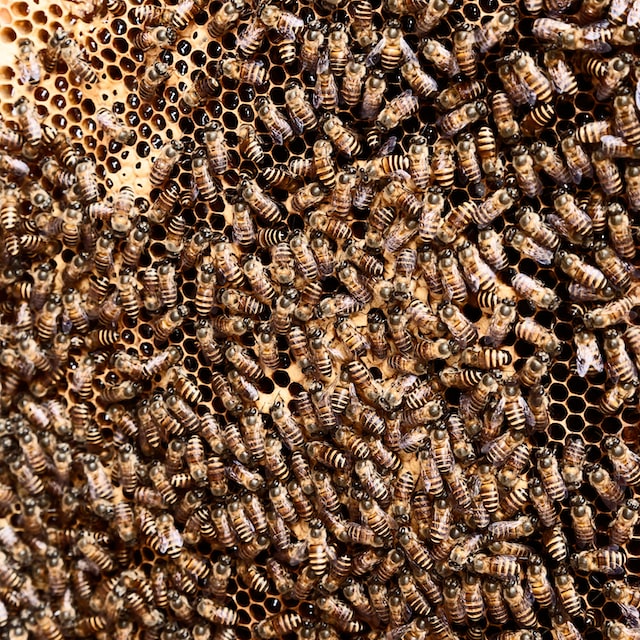Busy bees, busy preparing for the winter ahead. They love this ivy, blooming in September and growing in abundance. So, nature’s little workforce comes in their thousands each day. Their priority now is gathering and storing nectar and pollen to have plenty in reserve to survive through the winter. Honey bees don’t hibernate, so they need the resources to survive the cold winter. In nature’s trade-off, these bees will work themselves to death, gathering their harvest. What matters is the survival of the colony and the Queen. The energy this feeding frenzy gives them will keep them warm as they cluster in the hive, shivering to generate heat.

Keeping warm
So, why must bees prepare for winter? Bees keep warm by generating heat with their muscles. Without moving the wings, rhythmic contractions of flight muscles generate heat, keeping the ambient temperature between 33 and 36 degrees Celsius. Before this discovery, worker bees were thought to be resting. Nothing could be so far from the truth; this unseen muscle activity is hard work, using a lot of energy. An individual bee’s body temperature can rise to 44 degrees Celsius.

Ray Noble is a chartered biologist and Fellow of the Royal Society of Biology. He writes extensively on biological theory and philosophy. He was Deputy Dean of Life Sciences at UCL, London, and Graduate Tutor in Women’s Health.

Is the temperature of the colony maintained at 33-36C during the winter when the queen has stopped laying, there is no brood, and they are “shut down”?
An interesting point and question. I understand that some of the bees will thermoregulate the winter cluster, protecting the queen and rearing the small amounts of brood during the winter to keep the colony ticking over, although it might shut down depending on conditions. In the hive, “winter bees” can live for 6 months if needed.